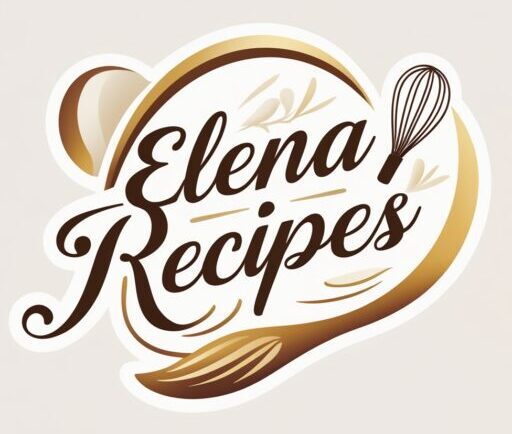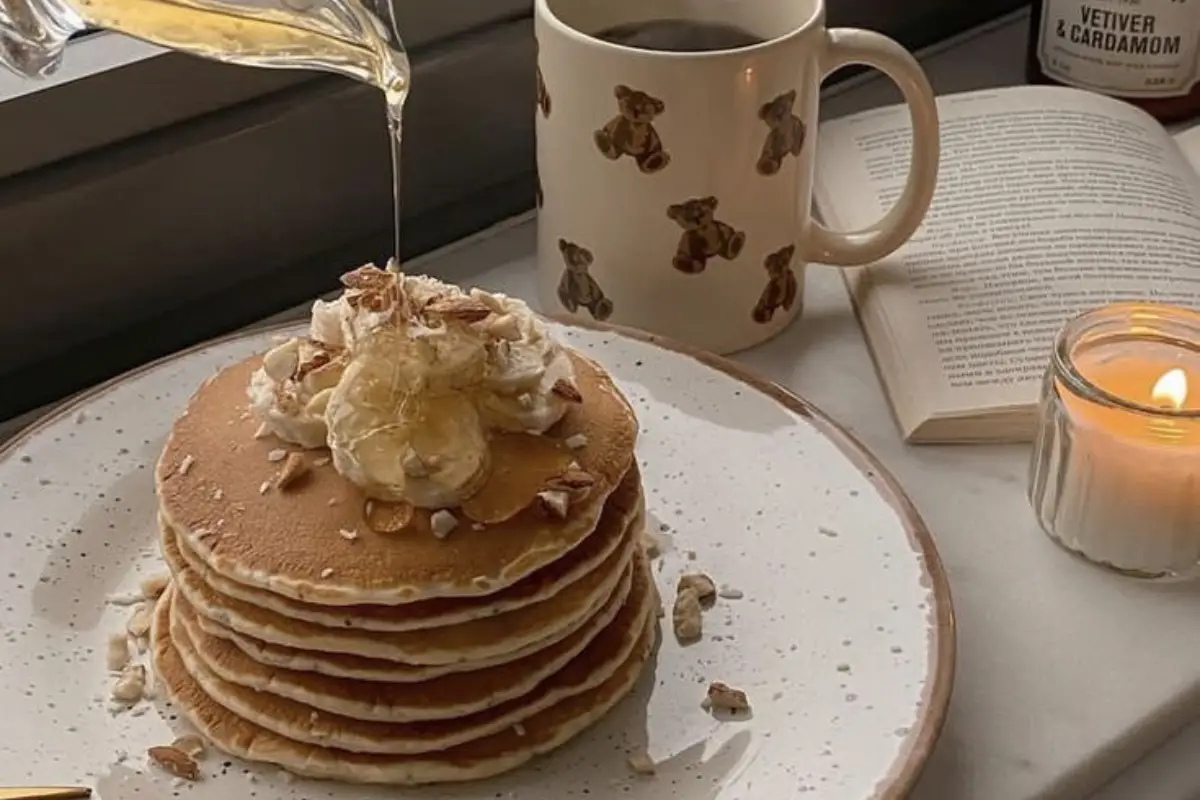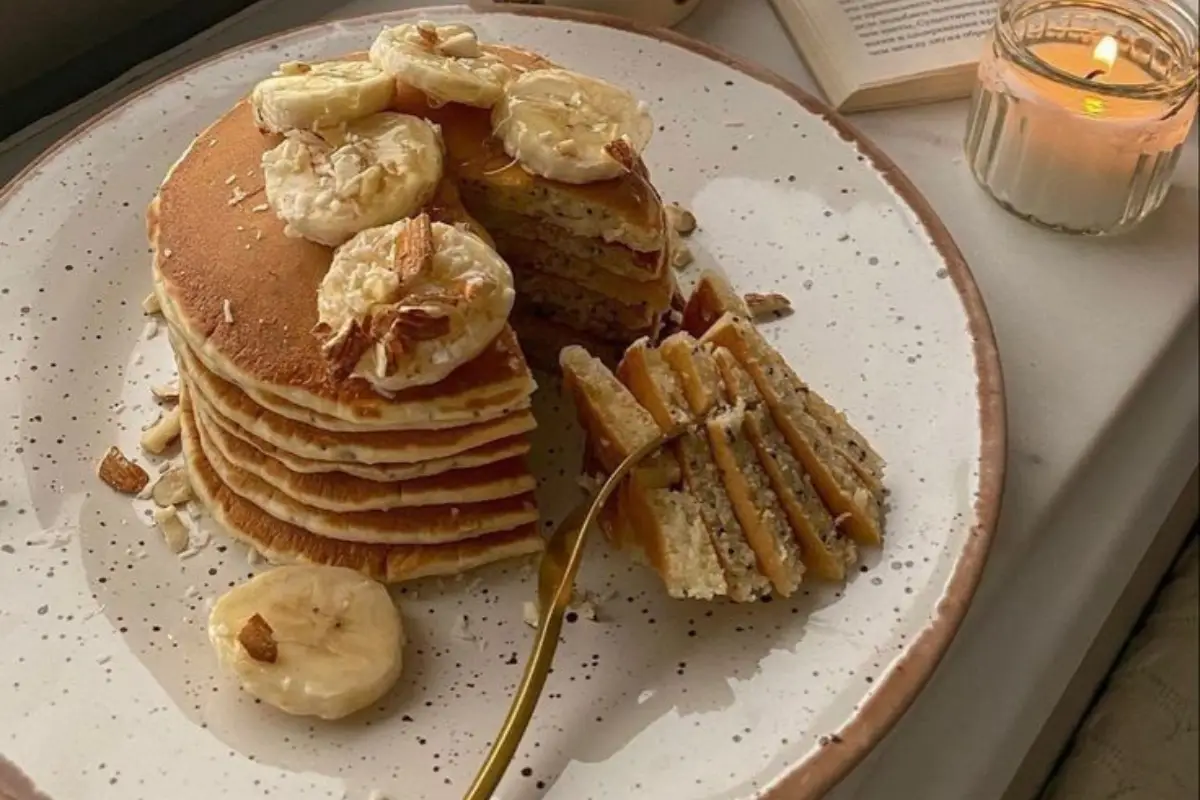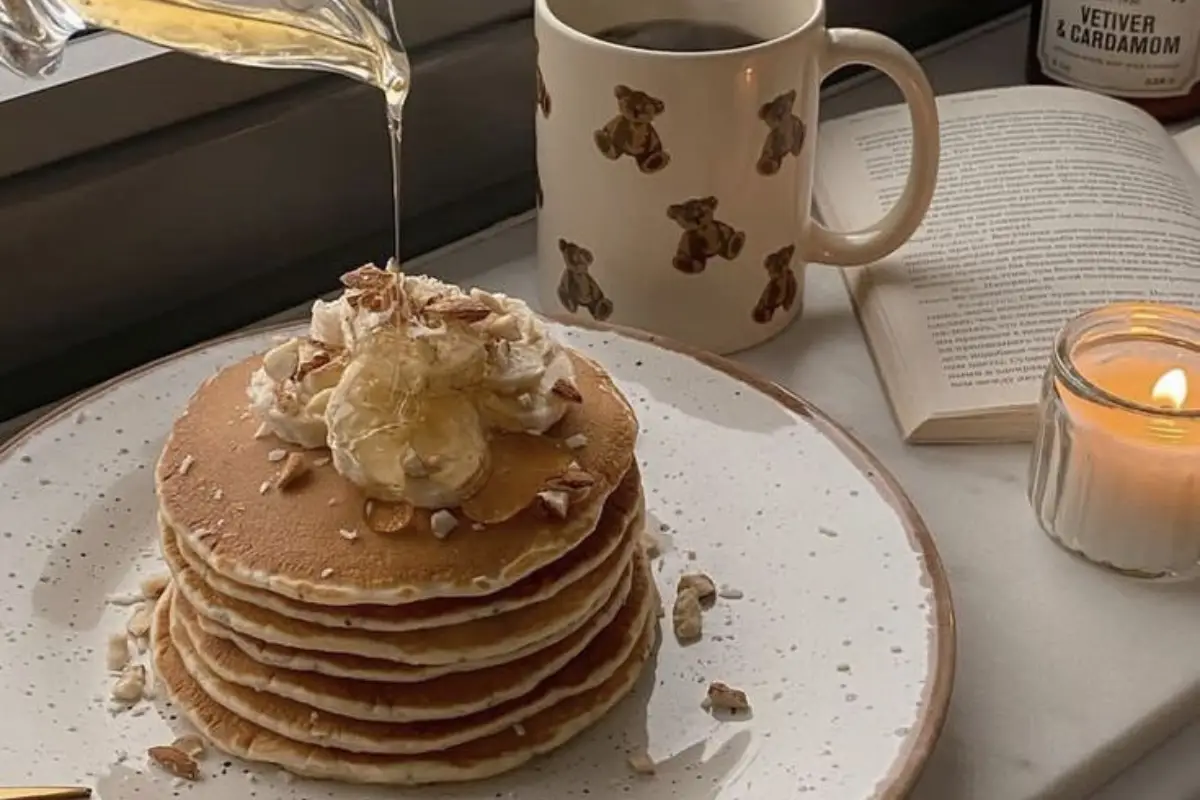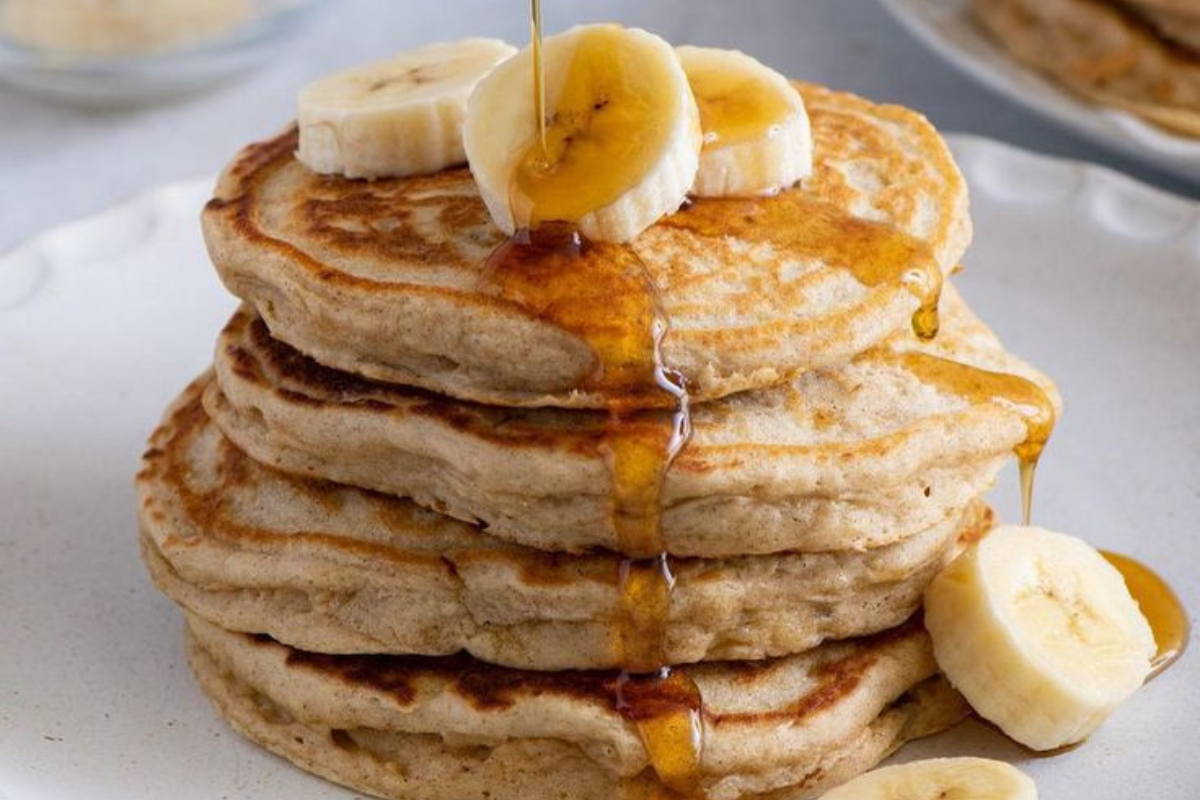Introduction to Milk-Free Pancake Recipes
The Delightful World of Milk-Free Pancakes
Welcome to the delightful world of milk-free pancakes – a realm where dietary needs merge seamlessly with culinary enjoyment. In this comprehensive guide, we’re set to explore the art of crafting delicious pancakes without the traditional ingredient of milk. Whether it’s due to dietary restrictions, lifestyle choices, or simply a twist in your regular recipe, milk-free pancakes open up a universe of tasty possibilities.
Pancakes have always been a beloved breakfast staple, and the move towards milk-free alternatives has only broadened their appeal. This shift reflects a growing awareness and accommodation of diverse dietary preferences. The beauty of milk-free pancakes lies in their simplicity and the ease with which they can be adapted to suit various tastes and requirements. They are a testament to the fact that making small changes in ingredients doesn’t mean compromising on flavor or texture.
Embracing a Diverse Culinary Approach
Milk-free pancake recipes cater not just to those who are lactose intolerant or allergic to dairy but also to vegans and those looking for healthier options. With a range of available substitutes like water, almond milk, soy milk, and coconut milk, these pancakes can be as varied as they are delicious.
These recipes challenge the traditional notion of pancake making, proving that a classic dish can be reinvented in ways that cater to modern health and ethical concerns without losing its essence. The result is a pancake that’s inclusive, versatile, and just as delightful as the traditional version.
As we delve deeper into this guide, you’ll discover various recipes, tips for achieving the perfect consistency, and creative ideas for serving. Our journey through the world of milk-free pancakes promises to be as informative as it is delicious. So, grab your apron, and let’s embark on this culinary adventure together!
Why Go Milk-Free? Understanding the Benefits
Navigating Dietary Restrictions and Preferences
The world of culinary delights is becoming increasingly inclusive, and milk-free pancakes are at the forefront of this evolution. Catering to a wide audience, from those with lactose intolerance to vegans, these pancakes offer a delicious solution without dairy. Lactose intolerance, affecting a significant portion of the population, necessitates the omission of milk from the diet. Milk-free pancakes ensure that this dietary restriction doesn’t mean missing out on the joy of a warm, fluffy stack of pancakes.
For vegans and those exploring plant-based diets, removing dairy from pancakes aligns with their ethical and dietary principles. These pancakes showcase the possibility of enjoying traditional dishes while adhering to a vegan lifestyle, proving that plant-based eating can be both nutritious and delicious.
The Health Perspective
Beyond accommodating dietary needs, choosing milk-free pancakes can also be a health-conscious decision. For some, dairy can contribute to inflammation, skin issues, and digestive problems. Opting for milk alternatives or water in pancake recipes can alleviate these concerns, offering a more digestible and often lower-calorie option.
Moreover, milk alternatives such as almond, soy, or oat milk can provide additional health benefits. These alternatives often come enriched with vitamins and minerals and can offer a lower fat content compared to regular milk. This makes milk-free pancakes a healthier option, appealing to those mindful of their overall well-being.
A World of Flavorful Possibilities
Embarking on a milk-free pancake journey isn’t just about dietary needs or health choices; it’s about embracing a world of new flavors and textures. Each milk alternative brings its unique taste and qualities to the pancakes, allowing for exciting and varied flavor profiles. This diversity transforms the simple act of making pancakes into a culinary exploration, inviting creativity and experimentation in the kitchen.
Key Ingredients for Delicious Milk-Free Pancakes
Building the Base: Selecting the Right Flour
The foundation of any pancake recipe is the flour. For milk-free pancakes, all-purpose flour is a common choice due to its versatility and availability. However, for those seeking healthier or gluten-free options, alternatives like oat flour, almond flour, or a gluten-free blend can be excellent choices. These not only cater to specific dietary needs but also add a unique flavor and nutritional profile to the pancakes.
Leavening Agents: Ensuring a Fluffy Texture
A crucial component in achieving the desired fluffiness in pancakes is the leavening agent. Baking powder is typically used in milk-free pancake recipes to help them rise and become airy. It’s important to ensure the baking powder is fresh to guarantee the best results. For those looking for a baking powder-free option, alternatives like baking soda combined with an acid (like lemon juice) can also be effective.
Binding and Moisture: Eggs and Their Substitutes
Eggs play a significant role in traditional pancake recipes, acting as a binder and adding moisture. In milk-free pancakes, eggs can still be used, but for those avoiding eggs (like vegans), substitutes such as mashed bananas, applesauce, or commercial egg replacers are great alternatives. These not only bind the ingredients but also contribute to the pancake’s texture.
The Role of Liquids: Exploring Milk Alternatives
Replacing milk in pancakes doesn’t mean compromising on taste or texture. Various milk alternatives can be used, including almond milk, soy milk, oat milk, or even water. Each option offers a different flavor and nutritional profile. Almond milk provides a slightly nutty taste, soy milk offers a creamy texture, and oat milk brings a natural sweetness. Water is a simple substitute that works surprisingly well, especially when combined with a bit of melted butter or oil for richness.
Adding Flavor and Sweetness
To enhance the flavor of milk-free pancakes, ingredients like vanilla extract, cinnamon, or a small amount of sugar can be added. These elements contribute to the overall taste, making the pancakes delicious even without traditional milk.
Crafting the Perfect Milk-Free Pancake
Classic Milk-Free Pancake Recipe
Creating the classic milk-free pancake is simpler than you might think. Here’s a straightforward recipe to get you started:
- Ingredients: Basic pantry staples like flour, baking powder, a pinch of salt, sugar, water or a milk alternative, an egg or an egg substitute, and a little oil or melted butter.
- Mixing the Batter: Start by combining all the dry ingredients. In another bowl, mix the wet ingredients. Then, pour the wet mix into the dry ingredients, stirring until just combined. Remember, a few lumps are okay – overmixing can lead to tough pancakes.
- Cooking: Heat a non-stick skillet or griddle over medium heat. Pour small amounts of batter onto the heated surface. When bubbles form on the top and the edges look set, gently flip the pancakes. Cook until both sides are golden brown.
This recipe results in light and fluffy pancakes that can be enjoyed with your favorite toppings.
Creative Variations of Milk-Free Pancakes
Once you’ve mastered the basic recipe, why not experiment with some creative variations? Here are a few ideas:
- Add-Ins: Mix in fruits like blueberries or bananas directly into the batter for a fruity twist.
- Flavor Infusions: Incorporate cinnamon, vanilla extract, or even a bit of lemon zest to add depth to the flavor.
- Savory Options: For a savory version, consider adding finely chopped herbs, cheese, or even a bit of cooked bacon to the batter.
These variations can transform your basic milk-free pancakes into something extraordinary, making them perfect for any meal or occasion.
Mastering the Art of Milk-Free Pancake Making
Achieving the Right Batter Consistency
One of the keys to perfect pancakes is getting the batter consistency just right. It should be smooth but not too runny or overly thick. For milk-free pancakes, the consistency can vary slightly depending on the alternative liquid used. Water will make the batter more liquidy, while milk substitutes like almond or oat milk will give a slightly thicker texture. The trick is to add the liquid gradually and mix until you reach a pourable consistency that easily spreads on the griddle but isn’t too thin.
Cooking Techniques for Fluffy Pancakes
- Temperature Control: Maintaining the correct griddle or pan temperature is crucial. It should be hot enough that the batter sizzles upon contact, but not so hot that the pancakes burn. A medium heat generally works best.
- The Flip: Wait until bubbles form on the surface of the pancake and the edges begin to look set before flipping. This ensures that the pancakes are ready to be turned and will hold their shape.
- Avoid Flattening: After flipping, resist the urge to press down on the pancakes with your spatula. This can squeeze out the air that makes them fluffy.
- Consistent Size: Use a measuring cup or ladle to pour the batter onto the griddle for consistently sized pancakes. This not only makes serving easier but also ensures they cook evenly.
Perfecting these techniques might take a little practice, but the reward is a batch of beautifully cooked, fluffy milk-free pancakes that everyone will love.
Addressing Common Questions About Milk-Free Pancakes
Substituting Ingredients and Handling Allergies
Q: What can I use instead of an egg in milk-free pancakes?
A: If you’re avoiding eggs, you can use alternatives like a flax or chia egg (1 tablespoon ground flaxseed or chia seeds mixed with 2.5 tablespoons water), mashed bananas, or applesauce. These substitutes not only bind the ingredients but also add moisture to the pancakes.
Q: Can I make gluten-free milk-free pancakes?
A: Absolutely! Simply replace the all-purpose flour with a gluten-free flour blend. Be sure to check that the blend is suitable for pancakes, as some might require additional binding agents.
Storing and Reheating Tips
Q: How should I store leftover milk-free pancakes?
A: Leftover pancakes can be stored in an airtight container in the fridge for up to 3 days. For longer storage, freeze them with sheets of parchment paper between each pancake to prevent sticking. They can be reheated in a toaster, oven, or microwave.
Q: Can milk-free pancakes be frozen?
A: Yes, milk-free pancakes freeze well. Place them in a single layer on a baking sheet and freeze. Once frozen, transfer them to a freezer-safe bag or container. They can be reheated directly from frozen for a quick and convenient breakfast option.
Creative Serving and Pairing Ideas for Milk-Free Pancakes
Toppings and Side Dishes
The joy of milk-free pancakes is their ability to pair wonderfully with a wide range of toppings and side dishes. Here are some ideas to inspire your next pancake feast:
- Sweet Toppings: Classic maple syrup, honey, or agave nectar are always a hit. You can also top your pancakes with fresh fruits, a dollop of yogurt, a sprinkle of nuts, or a dash of cinnamon for added flavor.
- Savory Combinations: If you prefer a savory twist, try topping your pancakes with avocado, a fried egg, or a smear of herbed cream cheese. Adding a slice of smoked salmon can turn it into an elegant brunch dish.
Pairing with Beverages and Other Foods
- Beverage Pairings: Milk-free pancakes go well with a variety of beverages. Enjoy them with a cup of coffee, tea, or a fruit smoothie for a balanced breakfast. For a brunch setting, sparkling water with a twist of citrus can be a refreshing accompaniment.
- Complementary Foods: Serve your pancakes alongside other breakfast favorites like scrambled eggs, hash browns, or a fruit salad. The contrasting flavors and textures will create a satisfying and well-rounded meal.
Embracing the Versatility of Milk-Free Pancakes
Celebrating the Flexibility and Flavor of Milk-Free Options
Milk-free pancakes are more than just a dietary alternative; they represent the ever-evolving landscape of culinary creativity. This journey through various milk-free pancake recipes and techniques showcases not only the adaptability of a beloved classic but also its ability to bring joy and satisfaction to a wide range of dietary preferences and needs.
From exploring the historical context and understanding the health benefits of going milk-free to diving into recipes and serving suggestions, we’ve seen how milk-free pancakes can be just as delicious and satisfying as their traditional counterparts. The versatility in ingredients, from various flour types to milk alternatives and egg substitutes, allows for a myriad of combinations, each offering unique flavors and textures.
A Dish for Everyone
Milk-free pancakes are a testament to inclusive cooking, ensuring that everyone, regardless of dietary restrictions or choices, can enjoy a warm, comforting stack of pancakes. They prove that modifications in recipes can lead to delightful discoveries and new favorites.
Whether you’re whipping up a quick breakfast, preparing a brunch spread, or seeking a comforting meal, milk-free pancakes are a fantastic option. They encourage experimentation and personalization, inviting both novice cooks and seasoned chefs to explore their culinary creativity.
